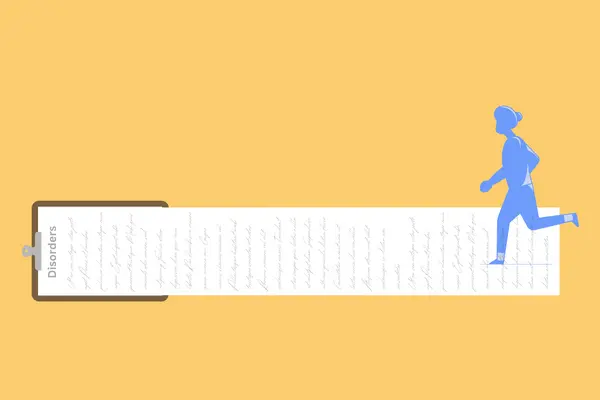“Back in our day, anxiety didn’t exist,” said my mother-in-law.
We were driving back from a family trip together, and she was recounting a conversation she’d had with her sister. Her niece had been having anxiety about leaving home for college.
Her sister completely agreed. “Yeah, we just toughed it out,” she had said. From the way my mother-in-law explained it, her sister was frustrated and couldn’t understand why her daughter had a seeming inability to cope with life’s challenges.
Here’s the thing, I don’t think these two women were trying to discount this young woman’s experience. They were trying to figure out the best thing to do for her. They just didn’t understand where she was coming from.
Today everyone seems to have some mental disorder or other. The seeming commonality of mental disorders has many journalists, politicians, psychologists and frustrated parents of struggling teens wondering, why? One of the most recent trends even blames birth order, as was proposed in a recent popular TikTok video.
But maybe “why?” is the wrong question to be asking ourselves. My mother-in-law and I had this conversation on that car ride, and I think I’ve chosen my stance from a different angle. I say, What can we learn from increasingly prevalent mental disorders?
There is one very important lesson that I hope everyone learns: be kind. Try to understand how other people are thinking and feeling. Don’t let your preconceived notions and understanding about yourself allow you to judge someone else’s mental disorders through your lens.
There’s a lot that goes into understanding each other better through mental disorders.
Many Different Kinds of Mental Disorders
First of all, consider the many different types of mental disorders. According to Mental Health America, a national nonprofit dedicated to mental health and well-being, “There are more than 200 classified forms of mental illness. Some of the more common disorders are depression, bipolar disorder, dementia, schizophrenia and anxiety disorders.”
The World Health Organization gave a more complete list by categories adding post-traumatic stress, eating, dissocial and neurodevelopmental disorders, such as ADHD or Autism Spectrum Disorder. Currently, most classifications of mental disorders can be traced back to the American Psychological Association’s current Diagnostic and Statistical Manual, or DSM-5.
Anxiety and depression, which are some of the most common disorders, tend to go along with any of these.
With all of these disorders combined, WHO data from 2022 suggests that one in eight people in the world lives with a mental disorder.
Given the volume of mental disorders should it be any surprise that one out of every eight people we talk to every day is dealing with a silent (or not-so-silent) struggle? Statistically, that is two to five people in an average 1A class, at least 32 in the average church ward, and possibly one on any given city council or school board in Southern Utah.
The Pros and Cons of Sharing Diagnoses More Openly
Despite what my mother-in-law might say, it’s pretty safe to assume that people have been dealing with mental disorders throughout history. And it may have even been at the same level that the media is so upset about today.
What has not always been common is talking about it. A growing trend in recent years is to share mental health diagnoses more openly, even between strangers or people who’ve just met.
As a disclaimer, this may not always be the best approach. In fact, there is debate as to whether everyone dealing with a mental disorder, minor or not, should even receive a diagnosis. DSM-5 had many critics for its number of diagnosable disorders. One professor of psychology, Joel Paris, criticized the manual saying it “makes many of life’s misfortunes diagnosable, and implicitly offers psychiatry as a cure for unhappiness.”
![“[Overdiagnosis] is a topic with no shortage of opinions, and pretty much no numerical evidence. Too much focus on diagnoses can lead to stigmatization or victimization, ... Too little focus can lead to lots of people struggling from ignorance.”](https://utahbyway.com/wp-content/uploads/2024/04/Overdiagnosis_-is-a-topic-with-no-shortage-of-opinions_-and-pretty-much-no-numerical-evidence.webp)
Unfortunately, it is extremely difficult to try to prove the existence of over- or underdiagnosis. In several studies, researchers have attempted to find empirical evidence of over- or underdiagnosis, with not much luck.
On either side, it is a topic with no shortage of opinions, and pretty much no numerical evidence. Too much focus on diagnoses can lead to stigmatization or victimization, which isn’t very good for anyone. Too little focus can lead to lots of people struggling from ignorance.
Still, receiving and sharing a diagnosis with a close friend can be a part of healing and understanding oneself. It can also help that friend understand you better.
When a friend confides in you and shares a diagnosis of a certain disorder, they’re usually not just looking for attention. They also don’t need you to tell them to just buck up and pretend the disorder doesn’t exist. It does. It’s hard. But they’re already working on it — that’s the point.
Everyone Wants to Be Understood Even If It’s through a Disorder
Perhaps the trend to talk about diagnoses more openly is somewhat of a plea, not to be treated differently, but to be understood. The purpose of a diagnosis, after all, is to help a person better understand where their symptoms are coming from, and how to get better.
For a friend, coworker, sibling or spouse, it can be an invitation to read a book, follow a new social media account, talk to a professional or look up information online that could educate you about the disorder.
With all of the buzz around mental disorders today, I’ve even hazarded the question, “Is anybody really neurotypical?” And the answer is probably no. Now, do some people have unique disorders such that their lives are disrupted in a really bad way? Definitely. But everyone thinks a little differently.
A New Framework for Understanding Mental Disorders and Otherwise
Despite the way she talks, my mother-in-law is actually really understanding. She talks about mental disorders because she’s trying to understand them, and I’m actually the one who tends to make assumptions.
Over and over again, I have been surprised to learn that someone close to me acts and feels the way they do because they have an actual disorder. This changes the way I see them because suddenly I understand just a little bit of where they’re coming from — especially if I research into the specific disorder. Imagine if we gave everyone that benefit of doubt. Many people better than me already do!
So please, be kind.
You don’t have to change the way you act, so much as the way you think about others. Be more understanding. Give your teenager’s bad habits, or your spouse’s stress, or your best friend’s forgetfulness, or your 4-year-old’s tantrums a little less judgment. Recognize that they’re still learning about themselves. Whether they have a diagnosis or not, they might be going through something you don’t completely understand.
– by Abbie Call
Feature image courtesy of Abbie Call, The Byway.
Read about recent research on mental health and disorders in The False Dichotomy of Talking about Mental Health.

Abbie Call – Cannonville/Kirksville, Missouri
Abbie Call is a journalist and editor at The Byway. She graduated in 2022 with a bachelor’s degree in editing and publishing from Brigham Young University. Her favorite topics to write about include anything local, Utah’s megadrought, and mental health and meaning in life. In her free time, she enjoys reading, hanging out with family, quilting and hiking.
Find Abbie on Threads @abbieb.call or contact her at abbiecall27@gmail.com.

